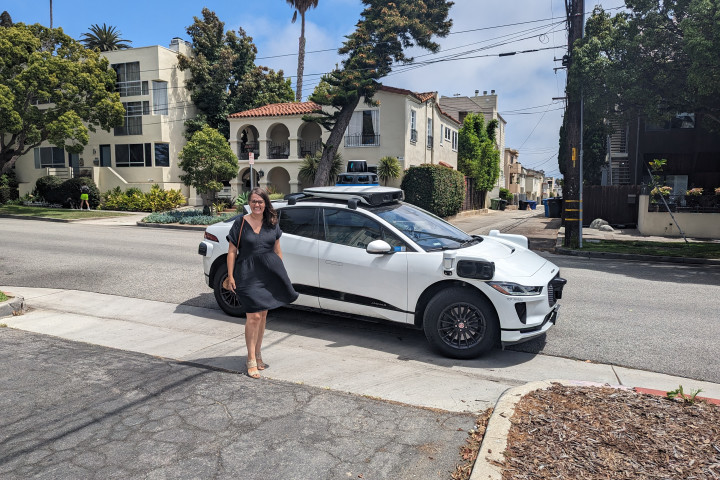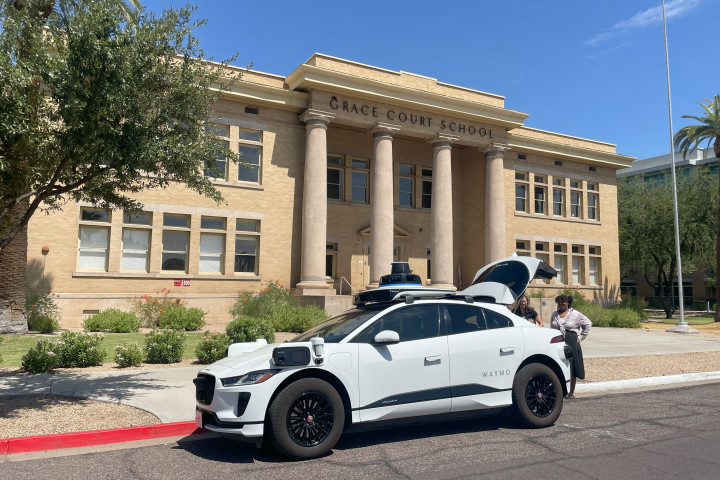The Results Are In: San Francisco Weighs in on Safety, Mobility, and Autonomous Driving
March 19, 2021
In 2020, we invited San Francisco residents to complete a survey in which they shared their thoughts on traffic safety, mobility, transportation, and the challenges of living in the city. Nearly 1,000 people responded to our survey, and the results are both compelling and informative, offering nuanced insights into the issues people face on San Francisco streets on a daily basis.
We learned that a majority (62%) of San Francisco residents would choose to ride in an autonomous vehicle and heard from individuals who were excited to spend less time behind the wheel. We also heard genuine concerns about what autonomous driving in San Francisco would look like and skepticism around trusting technology.
Let’s dive in.
Transportation Modes Among Respondents
While the people we surveyed remained anonymous, we were able to learn a bit about how San Francisco residents were getting around in late 2020. We learned that over a two-month period:
- 61% drove a personal vehicle
- 60% walked
- 36% biked
- 31% rode a taxi or used a ride sharing app
- 26% rode on the BART
- 25% took the bus
- 11% used an electric scooter
- 7% used a motorcycle
- 4% used the trolley
Note: Survey respondents were asked to choose as many options as applied
The results show us that while many San Franciscans drive, they also live in a highly multimodal city, with people shifting between walking, cycling, rideshare, and using scooters and public transportation.
In a city like San Francisco, fully autonomous driving technology has the potential to make roads better for everyone. Waymo’s technology is designed to be a safe, cautious, and defensive driver that is constantly vigilant of surroundings, including anticipating pedestrians, cyclists, and other road users.
San Franciscans and Mobility
Because autonomous driving technology holds the potential to expand mobility options for people who cannot drive, we also asked San Franciscans if they knew someone with limited mobility, or if they experience mobility challenges themselves.
- 57% said they know someone with a disability
- 45% said they know someone who can no longer drive because of their age
- 19% said they have a disability themselves
- 17% said they know someone who is blind
Note: Survey respondents were asked to choose as many options as applied
The results show us that the majority of respondents know someone with a disability, and nearly one-fifth of respondents personally have a disability. Along with safety, expanded access for mobility may be one of the greatest opportunities for autonomous vehicle technology. It holds the potential to bring a new level of freedom and independence for those who cannot drive, such as people who are blind, people experiencing a loss of vision, or people who can no longer drive because of their age.
Prominent advocates for people who are blind have emphasized that autonomous driving technology is continually evolving and holds the potential to accommodate passengers who are blind in unique ways. The American Association of People with Disabilities (AAPD) has highlighted autonomous driving technology as a key to expanding accessibility efforts.
Read more about Waymo’s approach to accessible mobility here.
Mobility Obstacles
When asked “What makes it difficult to get around San Francisco?”, the results were mixed.
- 74% said “Finding parking”
- 63% said “Unreliable public transportation”
- 63% said “Dangerous drivers”
- 57% said “Stressful commute”
- 52% said “Too much traffic”
- 48% said “Cost of transit”
- 47% said “Not enough bike lanes”
- 23% said “Don’t feel safe”
Note: Survey respondents were asked to choose as many options as applied
We asked respondents to elaborate and they mentioned “double parking,” “construction,” “overcrowded public transportation,” “cars in bike lanes,” and “unpredictable pedestrian behavior” as further barriers to safely navigating the city.
Fully autonomous driving could complement public transit networks, with low-speed autonomous shuttles serving city centers, campuses, and other large employment destinations.
Autonomous driving also holds the potential to reduce stress, removing the need for passengers to navigate traffic, worry about other drivers, or pay constant attention to their surroundings.
Safety and SF Streets
Safety was also a major concern for San Fransicans. Cars “basically blowing through stop signs,” cyclists “running red lights,” and “blind turns” were all mentioned. One respondent even said, “Crossing the street as a pedestrian when any cars are on the road feels like I’m cheating death for a minute.”
In a city as busy as San Francisco, safety concerns are not surprising. Luckily, fully autonomous vehicles have the potential to make our roads safer for drivers, pedestrians, cyclists, first responders, and more.
Waymo’s autonomous vehicles are designed to be vigilant of their environments and can recognize pedestrians, cyclists, other cars, and objects. They can predict pedestrians’ next moves and make appropriate and safe driving decisions.
Fully Autonomous Driving Technology
We asked “Would you ride in an automated car if given the opportunity today?” and were happy to hear that 62% of respondents said “Yes.” Further, 7% of respondents report they already had ridden in one.
In a city that embraces technology like San Francisco, the more people know about autonomous driving, the more likely they are to want to ride in one. This supports similar findings we made in a survey of Phoenix residents.
We were also curious to hear what people would do with their time if they didn’t need to drive themselves.
- 64% said “Enjoy the city”
- 59% said “Relax and decompress”
- 38% said “Call/text friends and family”
- 34% said “Get more work done”
- 32% said “Read or watch a video”
- 25% said “Check social media”
Note: Survey respondents were asked to choose as many options as applied

We even had one respondent say they would learn to play the ukulele.
Of course, some respondents were skeptical about autonomous driving, specifically related to safety and how they’ll share the road with others. It’s natural to have concerns about a new technology, but we’re confident in the potential of autonomous driving technology to make the city’s roads safer, add convenience, and expand mobility options to new people.
For more, visit our FAQ page and read our What Ifs.
Sign Up
Join us in the most important conversations about how autonomous driving technology may shape the future of safety, mobility, community, and society.


